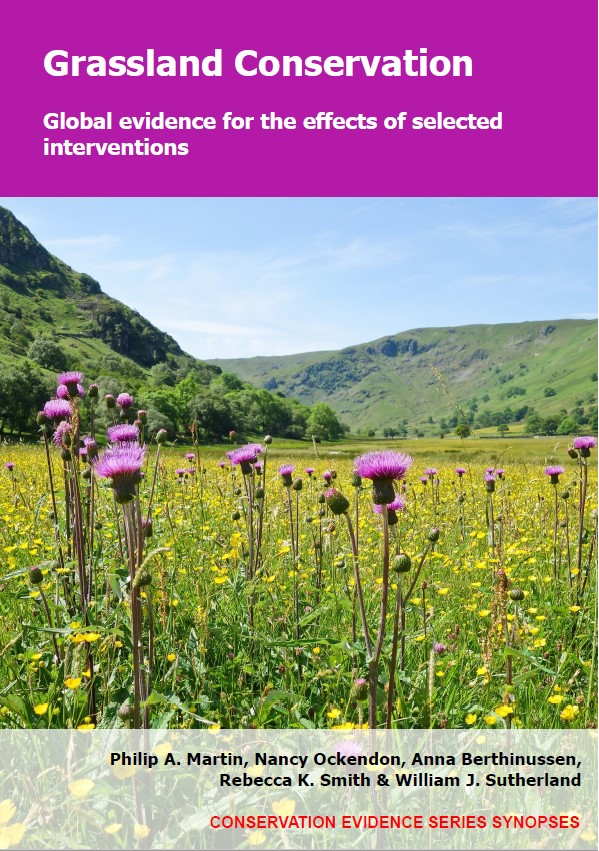Spray slurry of seed, mulch and water (‘hydroseeding’)
-
Overall effectiveness category Evidence not assessed
-
Number of studies: 4
View assessment score
Hide assessment score
How is the evidence assessed?
-
Effectiveness
not assessed -
Certainty
not assessed -
Harms
not assessed
Study locations
Supporting evidence from individual studies
A replicated, randomized, paired, controlled study in 1998–1999 in a former arable field in California, USA (Montalvo et al. 2002) found that hydroseeding increased the abundance of half of plant species compared to drill seeding. The abundance of three of six plant species was higher in areas where hydroseeding was used (0.3–17.0 plants/m2) than where drill seeding was used (0.2–10.0 plants/m2). However, abundance of two species was lower (hydroseeded: 1–12 plants/m2; drill: 2–18 plants/m2), and in one case there was no significant difference (hydroseeded: 228–368 plants/m2; drill: 313–370 plants/m2). In February 1998, eight blocks each with three 27 × 4.5 m plots were established. In each block, one plot was hydroseeded using a slurry of seed, water, and wood fibre at a rate of 560 kg/ha, while in one plot seeds were drilled to a depth of 6–12 mm. A straw mulch was applied to all plots at a rate of 1,680 kg/ha. A hydromulch slurry of water, wood fibre, and soil stabilizer was sprayed over the straw. In July 1998 and January and May 1999, plant abundance in each plot was estimated using six 4 × 4 m quadrats.
Study and other actions testedA controlled study in 1992–1995 in a disused mine in Salamanca, Spain (Martinez-Ruiz et al. 2007) found that hydroseeding did not alter total vegetation cover. In five of six comparisons, there was no significant difference in vegetation cover between areas where hydroseeding was used (126–161%) and areas where hydroseeding was not used (122–142%), but in one comparison vegetation cover was higher (hydroseeded: 163%; not hydroseeded: 90%). Vegetation cover in nearby dahesas, the target habitat, was similar to that found in both areas that were hydroseeded and areas that were not (125–140%). In autumn 1992, one spoil dump was hydroseeded with a slurry containing mulch, fertilizer, tackifier, rhizobacteria, and a commercial grass seed mix containing 13 species. Another spoil heap was not hydroseeded and no seeds were sown in this area. In June 1993–1995, cover of all plant species in eight permanent 0.25-m2 quadrats located on each spoil heap was estimated.
Study and other actions testedA replicated, randomized, paired, controlled study in 2006–2008 on five motorway verges in central Spain (Garcia-Palacios et al. 2010) found that hydroseeding with non-native grass species led to an increase in plant cover but not plant diversity in most cases. No statistical tests were carried out in this study. In seven of ten comparisons, overall plant cover was on average higher in plots where non-native grass species were hydroseeded (49–61%) than in plots not sown with seeds (42–61%), while in three comparisons vegetation cover was lower in hydroseeded plots (40–58% vs 43–60%). In four of ten comparisons, plant diversity was higher in plots where non-native grass species were hydroseeded than in plots where no seeds were sown, while in six comparisons plant diversity was lower (data reported as Shannon diversity index). In December 2006, six random blocks containing two 1 × 1 m plots were established at each of five sites. In each block, one plot was hydroseeded with a mix of non-native seeds (30 g/m2), soil stabilizer (10 g/m2), wood fiber mulch (100 g/m2) and water (3 l/m2), and one plot was not sown with seed. In May 2007 and 2008, the cover of all plants was visually assessed in each plot.
Study and other actions testedA replicated, controlled study in 2011–2012 in an abandoned quarry site in northern Italy (Gilardelli et al. 2016) found that hydroseeding had mixed effects on plant species richness but increased the height of herbaceous vegetation. These results are not based on statistical analyses. After one year, areas where hydroseeding was carried out using local seeds had higher average plant species richness (16 species/plot) than areas where no seeds were sown (13 species/plot). However, plant species richness was lower in areas where hydroseeding was carried out using a commercial seed mix (10 species/plot). The average height of herbaceous plants was greater in areas that were hydroseeded with local seeds (100 cm) and commercial seeds (93 cm) than in areas where no seeds were sown (16 cm). In June 2011, the site was remodelled to create three 200-m2 terraced areas that were almost flat and topsoil was added. Two areas were hydroseeded at a rate of 36–40 g/m2 with either a commercial grassland seed mix or locally-collected hay seeds, while one area was not seeded. Shrubs and trees were planted in all three areas. Plants were watered in 2012 during dry periods. In June 2012, vegetation was surveyed in three 3 x 3 m randomly located plots in each area.
Study and other actions tested
Where has this evidence come from?
List of journals searched by synopsis
All the journals searched for all synopses
This Action forms part of the Action Synopsis:
Grassland Conservation
Grassland Conservation - Published 2021
Grassland Synopsis





)_2023.JPG)














